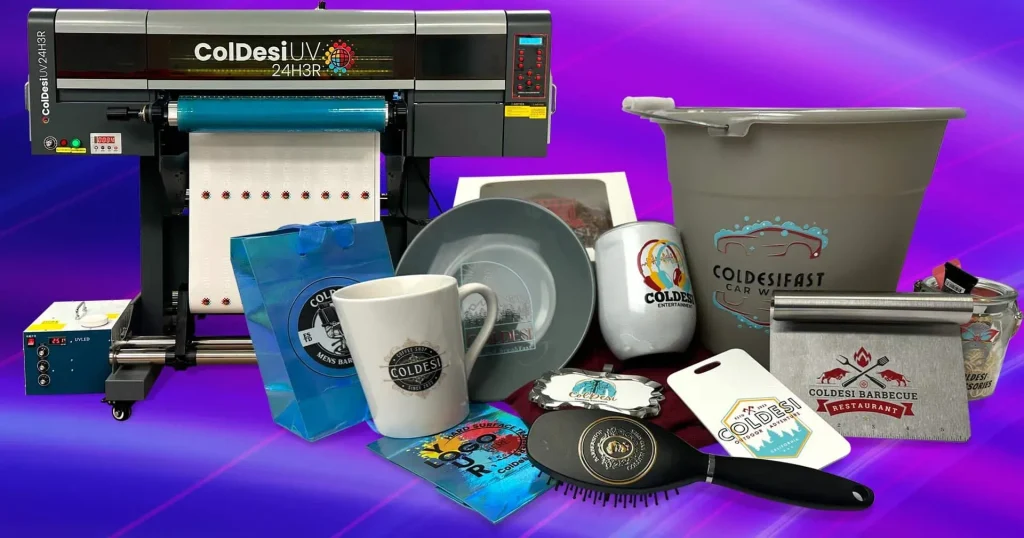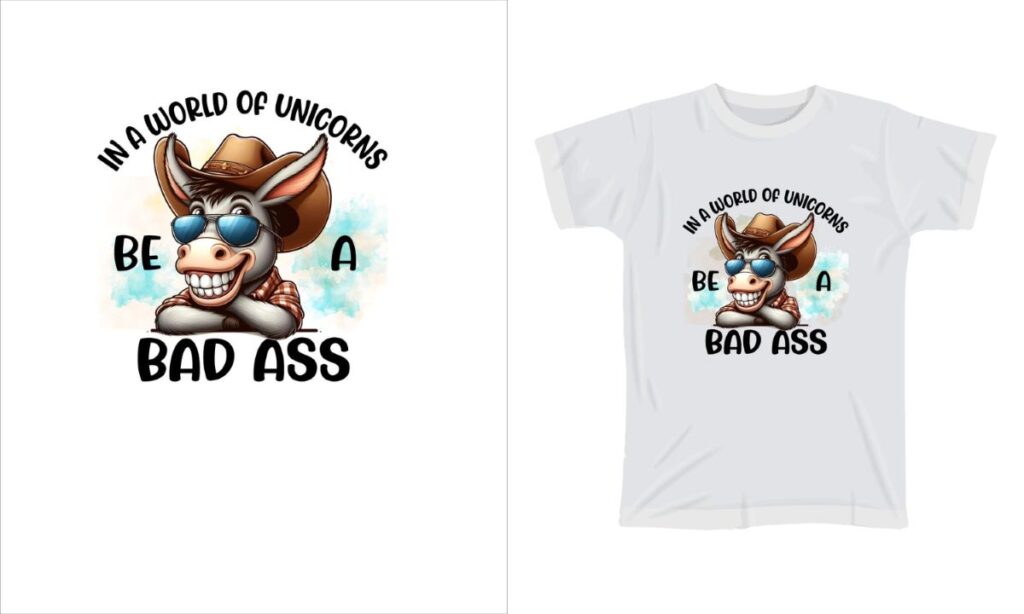UV DTF printing stands at the forefront of modern printing technology, revolutionizing how businesses approach customization and print quality. With its ability to deliver stunning visuals and intricate designs onto a variety of surfaces, UV DTF printing is reshaping industries that rely on vibrant and durable products. This innovative method contrasts sharply with traditional printing techniques, blending high efficiency with material versatility to cater to both small and large-scale projects. As organizations increasingly seek options that balance cost efficiency and environmental impact, UV DTF printing emerges as an ideal solution, providing businesses with the flexibility they need. In this article, we will explore the advantages of UV DTF printing, compare it with conventional printing methods, and help you navigate this exciting landscape of printing innovation.
In the realm of contemporary printing, the term “Direct-to-Film” (DTF) printing has gained considerable attention, particularly in the context of UV curing techniques. This advanced process allows for the direct application of inks onto different substrates, resulting in rich colors and high-resolution outputs. As industries pivot towards more efficient printing solutions, methods like UV DTF printing are often preferred over established alternatives, such as screen or offset printing. The increasing demand for customizable items further underscores the appeal of UV DTF, as it provides significant benefits in terms of operational efficiency and versatility across various materials. In this discussion, we’ll delve deeper into the nuanced differences between UV DTF printing and traditional printing methods to assess which approach best fits the needs of modern businesses.
Advantages of UV DTF Printing
UV DTF printing brings a plethora of advantages that are revolutionizing the way we think about print projects. One key benefit is its impressive print quality, which allows for vibrant colors and intricate designs to be achieved with a level of detail that traditional techniques often cannot match. Using UV light to cure the ink ensures that it bonds effectively to a variety of substrates, resulting in prints that are not only visually appealing but also durable and long-lasting.
Moreover, the time efficiency of UV DTF printing cannot be overlooked. Traditional techniques often involve lengthy setup processes, especially for projects with multiple colors. In contrast, UV DTF printing eliminates many of these delays, enabling quicker turnaround times. This speed not only satisfies customer demands for rapid production but also allows businesses to take on more projects simultaneously, increasing overall profitability.
Exploring Traditional Printing Techniques
Traditional printing techniques, though established and reliable, come with a unique set of strengths and weaknesses. Methods such as screen printing and offset printing provide proven quality, particularly for large-volume orders, making them the go-to choice for many businesses. These methods are time-tested, and their machinery is widely available, allowing for consistent print quality across countless runs.
However, traditional techniques often face challenges in versatility and detail, particularly for smaller batches. The setup costs of screen printing can be prohibitive for small orders, and these methods may struggle with fine details and color variations. Therefore, while they may excel in certain circumstances, they might not meet the needs of companies focused on customization or rapid printing.
Cost Efficiency in Printing
When considering cost efficiency, UV DTF printing proves to be a competitive option for businesses looking to optimize their operational expenditures. Although the initial investment in UV printing technology can be substantial, the long-term savings are evident, particularly in projects that require a limited number of prints. With no need for extensive setup or screen preparation, companies can benefit from reduced labor costs while continuing to provide high-quality output.
In contrast, traditional printing methods are often more cost-effective for large runs due to economies of scale. The per-unit cost decreases as the number of printed items increases, making it preferable for organizations looking to produce bulk orders. However, the significant initial setup costs can render these methods less appealing for smaller custom orders, limiting access to businesses with varied printing needs.
Material Versatility in Printing Techniques
One of the standout features of UV DTF printing is its unparalleled material versatility. This method allows printers to apply vibrant designs onto various surfaces, including textiles, plastics, glass, and wood, without compromising on quality. The ability to print on unconventional materials opens up a multitude of creative avenues for businesses, enabling them to cater to diverse customer requirements.
In contrast, traditional printing techniques have specific material limitations. For instance, screen printing is primarily confined to textiles, while offset printing is typically used for paper products. These constraints can hinder creativity and innovation, making UV DTF a more adaptable choice for companies aiming to push the boundaries of design and functionality.
Environmental Impact of Printing Methods
In the current market landscape, environmental consciousness is paramount, and the environmental impact of printing methods has come into sharp focus. UV DTF printing utilizes inks that produce fewer volatile organic compounds (VOCs) compared to traditional solvent-based inks. This reduction in harmful emissions contributes to a cleaner workplace and aligns with sustainability goals.
However, concerns remain regarding plastic waste stemming from the film used in the UV DTF process. Companies must weigh the benefits of fewer VOC emissions against the environmental footprint of disposable materials. Traditional methods, especially those utilizing water-based inks, are often viewed as more eco-friendly; yet, they may lack the durability associated with UV printed products, creating a complex dynamic in choosing the right technique.
Market Trends in Printing Technologies
As the printing industry evolves, recent market trends have shown a significant shift towards UV DTF printing, especially within the sectors focused on customization and promotional merchandise. Businesses are increasingly drawn to this method not just for its speed but also for the potential of high-quality, detail-oriented productions that meet today’s market demands.
Additionally, the expanding capabilities of UV DTF printing are in sync with growing consumer expectations for uniqueness and rapid delivery. As suppliers and customers alike recognize the versatility and effectiveness of UV printing, we can anticipate a continued rise in its adoption, influencing the overall direction of printing technologies in the coming years.
Frequently Asked Questions
What is UV DTF printing and how does it differ from traditional printing techniques?
**UV DTF printing**, or Direct-to-Film printing, employs UV light to cure inks on various surfaces, resulting in vibrant colors and high-quality finishes. Unlike traditional printing techniques, such as screen or offset printing, UV DTF allows for greater detail and customization, making it ideal for smaller runs.
How does UV DTF printing compare in print quality to traditional printing methods?
**UV DTF printing** offers superior print quality due to its ability to produce sharp images and intricate designs with vibrant colors. Traditional printing techniques may struggle with detail, particularly in smaller formats or multi-colored prints, making UV DTF a better choice for quality-focused projects.
Is UV DTF printing more cost-efficient than traditional printing techniques for small runs?
Yes, **UV DTF printing** can be more cost-efficient for small runs compared to traditional printing techniques, which often require minimum order quantities. Although the initial setup costs for UV DTF may be higher, the savings in setup time and materials for smaller projects make it an attractive option.
What materials can be used with UV DTF printing versus traditional printing techniques?
**UV DTF printing** is highly versatile, allowing for printing on a wide array of materials like plastics, wood, glass, and fabric. In contrast, traditional printing techniques, such as screen printing, are limited to specific materials (mostly textiles), which restricts creative possibilities.
What is the environmental impact of UV DTF printing compared to traditional techniques?
While **UV DTF printing** uses inks that emit fewer VOCs, concerns regarding plastic waste and hazardous materials from the transfer films persist. Traditional printing techniques using water-based inks are generally considered more eco-friendly but may compromise durability compared to UV prints.
What trends are influencing the adoption of UV DTF printing over traditional printing methods?
The rise of **UV DTF printing** is influenced by market demands for customization, speed, and superior print quality. As more businesses seek quick turnaround times and vibrant outputs for promotional products, they are increasingly shifting from traditional printing techniques to UV DTF for their projects.
| Aspect | UV DTF Printing | Traditional Printing Techniques |
|---|---|---|
| Technology Overview | Uses a curing process that ensures ink bonds well, providing durability. | Relies on established methods like screen and offset printing, suitable for larger production runs. |
| Print Quality | Achieves vibrant colors and detailed designs, ideal for customization. | Can deliver high-quality prints but struggles with fine detail and color complexity. |
| Cost Efficiency | Initial investment is higher but more cost-effective for small runs as setups are minimized. | More economical for bulk printing, but less accessible for small orders. |
| Material Versatility | Prints on a wide range of materials, making it adaptable for creative projects. | Material limitations exist, with specific methods targeting certain products. |
| Environmental Impact | Releases fewer VOCs but has concerns regarding plastic waste from films. | Often considered eco-friendly, though durability might be compromised. |
| Market Trends | Gaining popularity in customization and promotional sectors due to quality and speed. | Remains reliable for traditional printing needs, especially in bulk orders. |
Summary
UV DTF printing is revolutionizing the print industry with its advanced technology and unmatched versatility. It allows for vibrant colors, intricate designs, and efficiency in handling various materials, setting it apart from traditional printing methods. As businesses prioritize customization and quicker turnaround times, UV DTF printing stands out as a superior choice for those seeking quality and flexibility. On the other hand, traditional print techniques, while reliable for bulk production, may not accommodate the need for detail and variety. Therefore, selecting UV DTF printing can lead to successful and visually appealing projects, aligning perfectly with modern market demands.



